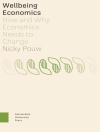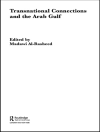Many analyses of time series data involve multiple, related variables.
Multiple Time Series Models presents many specification choices and special challenges. This book reviews the main competing approaches to modeling multiple time series: simultaneous equations, ARIMA, error correction models, and vector autoregression. The text focuses on vector autoregression (VAR) models as a generalization of the other approaches mentioned. Specification, estimation, and inference using these models is discussed. The authors also review arguments for and against using multi-equation time series models. Two complete, worked examples show how VAR models can be employed. An appendix discusses software that can be used for multiple time series models and software code for replicating the examples is available.
Key Features
- Offers a detailed comparison of different time series methods and approaches.
- Includes a self-contained introduction to vector autoregression modeling.
- Situates multiple time series modeling as a natural extension of commonly taught statistical models.
Tabela de Conteúdo
List of Figures
List of Tables
Series Editor?s Introduction
Preface
1. Introduction to Multiple Time Series Models
1.1 Simultaneous Equation Approach
1.2 ARIMA Approach
1.3 Error Correction or LSE Approach
1.4 Vector Autoregression Approach
1.5 Comparison and Summary
2. Basic Vector Autoregression Models
2.1 Dynamic Structural Equation Models
2.2 Reduced Form Vector Autoregressions
2.3 Relationship of a Dynamic Structural Equation Model to a Vector Autoregression Model
2.4 Working With This Model
2.5 Specification and Analysis of VAR Models
2.6 Other Specification Issues
2.7 Unit Roots and Error Correction in VARs
2.8 Criticisms of VAR
3. Examples of VAR Analyses
3.1 Public Mood and Macropartisanship
3.2 Effective Corporate Tax Rates
3.3 Conclusion
Appendix: Software for Multiple Time Series Models
Notes
References
Index
About the Authors
Sobre o autor
Patrick T. Brandt is an Assistant Professor of Political Science in the School of Social Science at the University of Texas at Dallas. He has published in the American Journal of Political Science and Political Analysis. He teaches courses in social science research methods and social science statistics. His current research focuses on the development and application of time series models to the study of political institutions, political economy, and international relations. He received an A.B. (1990) in Government from the College of William and Mary, an M.S. (1997) in Mathematical Methods in the Social Sciences from Northwestern University, and a Ph.D. (2001) in Political Science from Indiana University. Before joining the faculty at the University of Texas at Dallas, he held positions at the University of North Texas, Indiana University, and as a fellow at the Harvard-MIT Data Center.












